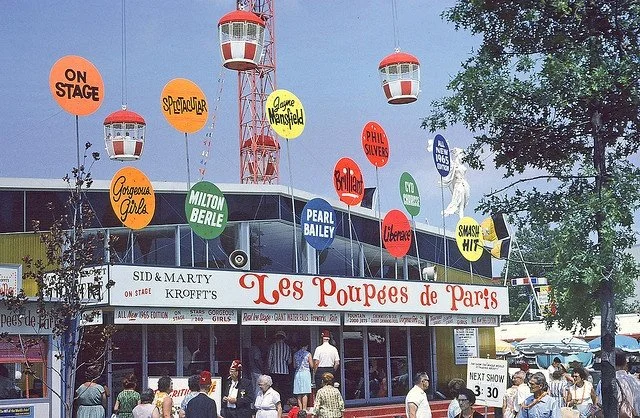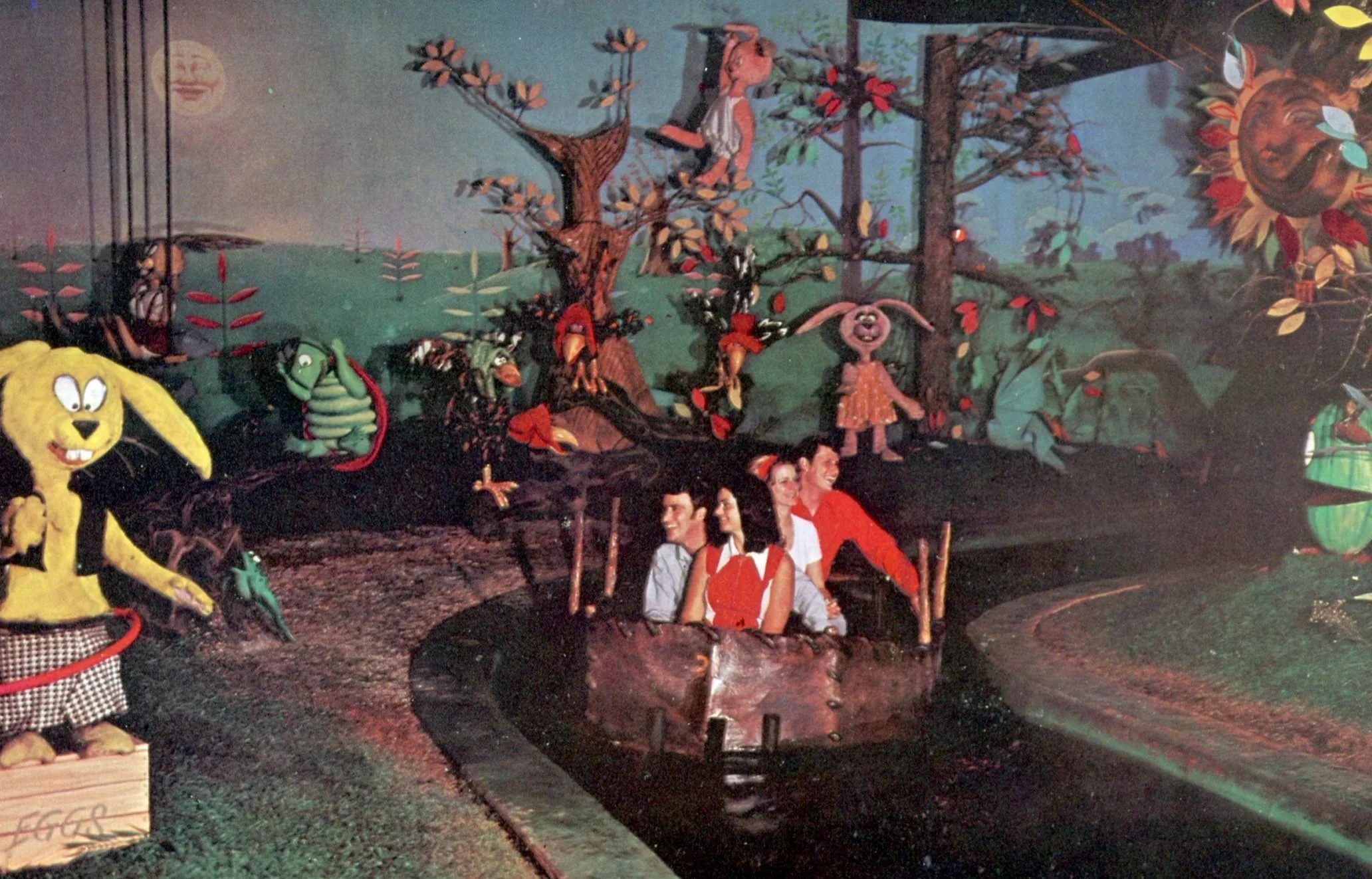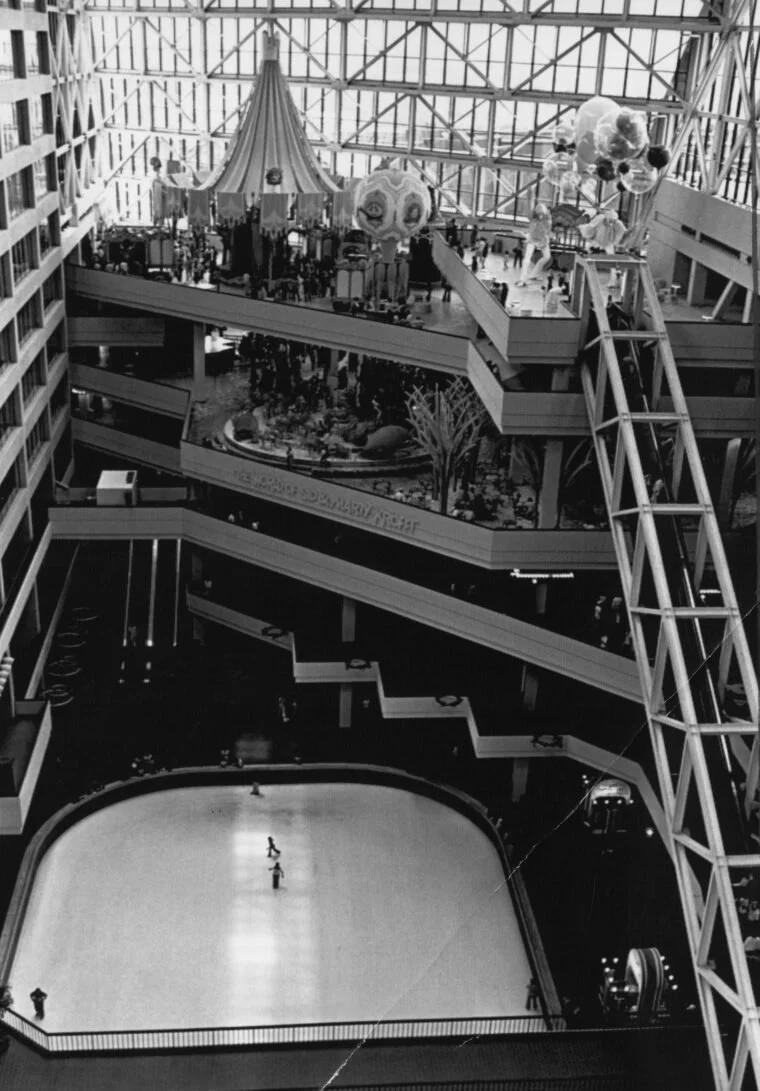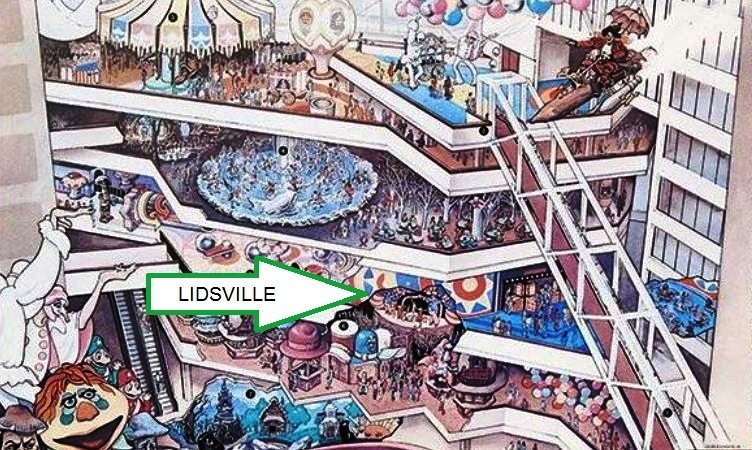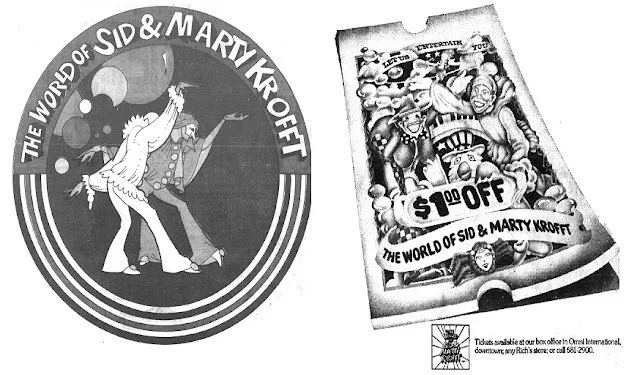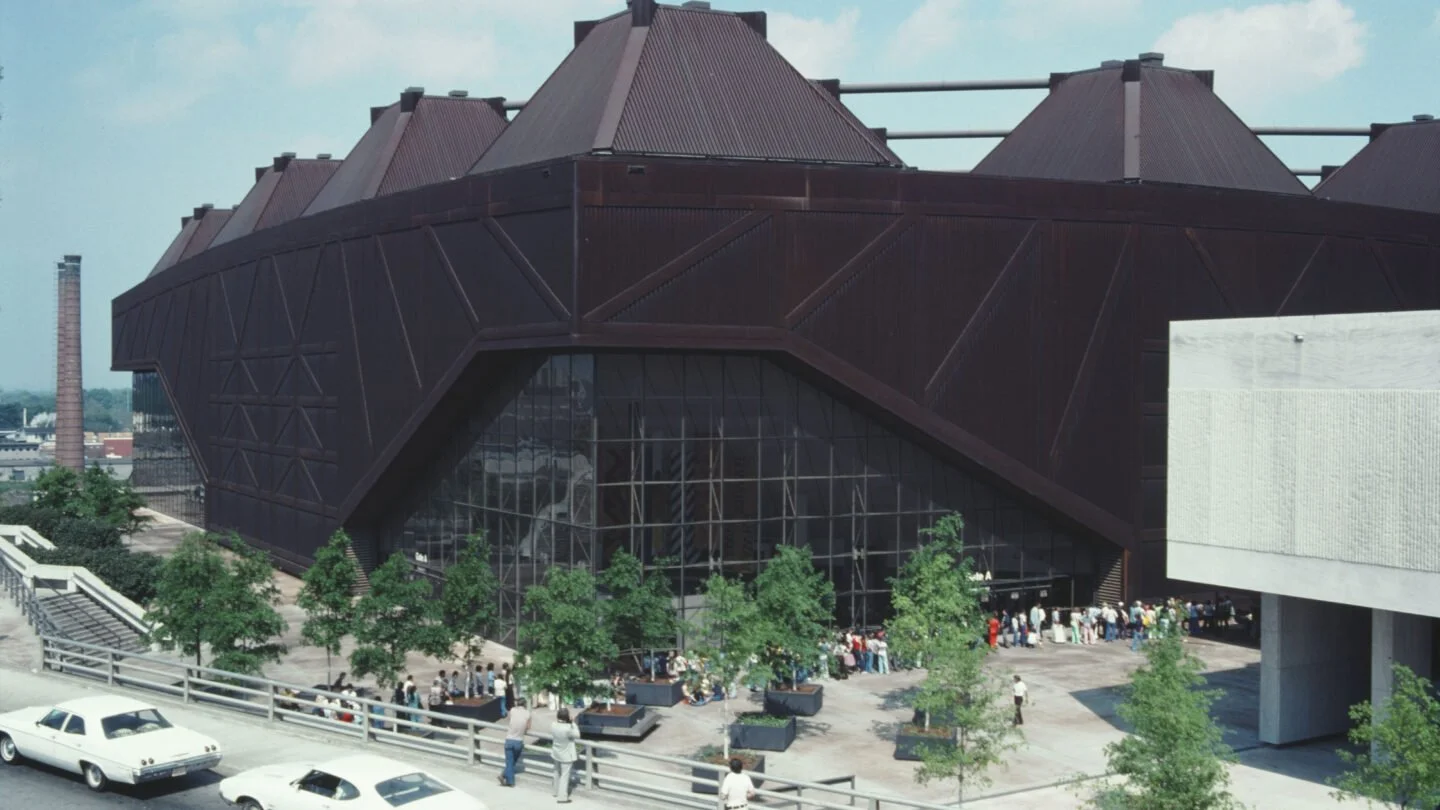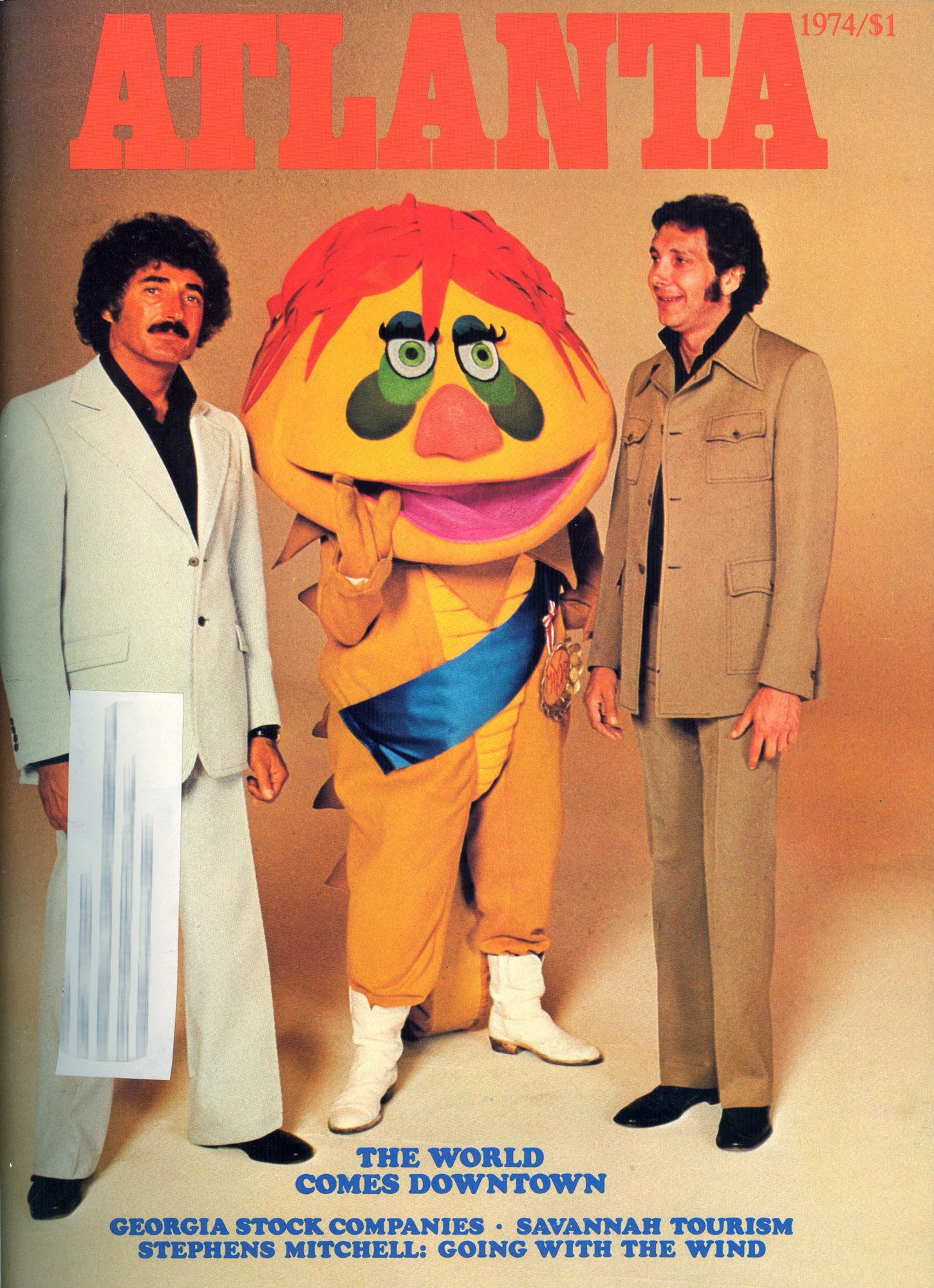The World of Sid & Marty Krofft
Although everybody fondly recalls the lovable Hanna-Barbera characters from years gone by, there was another powerhouse on Saturday morning television. In 1969, NBC wanted a new children’s series and approached a duo known for their popular puppet shows. Sid and Marty Krofft took one of their characters and developed “H.R. Pufnstuf” for the network. It would be merely the first in a long series of successful television programming that would continue for the next half-century.
But let’s step back a bit. Six Flags Over Georgia, second in the budding theme park chain, flung its gates open in 1967. Over toward the left-hand side of the park, in the USA section, stood the colorful Sid & Marty Krofft’s Puppet Theatre, sponsored by Coca-Cola. Six Flags Over Texas would add their own puppet theatre the following year, keeping the brothers busy for the next several seasons as they continually updated and changed out their shows. The park company actually invested in the Kroffts’ new “entertainment factory” in Hollywood, presuming that most of their work would be for the chain. (The brothers eventually bought out Six Flags’ interest as their media empire grew.)
Apparently other parks took note and sponsored their own Krofft productions, including Cincinnati’s Coney Island (transferred to Kings Island). Years before this, they had popular shows at the 1962 Seattle World’s Fair and the 1964-65 New York World’s Fair. And there were others, but this was long before they became famous on TV.
Back in Georgia, opening-season guests were giving the park’s dark ride a tentative spin over in the Confederate section. Tales of the Okefenokee was supposedly designed by Gene Patrick, who had done SFOT’s Spee-Lunker’s Cave dark ride, though Six Flags had several art directors working on the project. The storyline comes from the Uncle Remus series by local author Joel Chandler Harris. The problem was that it was pretty strange and rudimentary, with crude characters and limited animation. Realizing it needed a facelift, the park approached the Krofft brothers to spruce it up a bit.
The result was a refreshed experience with new figures, animation, and soundtrack that lasted until 1980. The ride featured the well-known Remus characters Mr. Bear, Mr. Rabbit, Mr. Fox, and so on, although their actual titles, such as “Brer Rabbit,” weren’t used, probably due to licensing restrictions. The boats wound their way through Okefenokee Swamp, slowly cruising past the colorful scenes.
It’s claimed that the Kroffts were the ones who designed Six Flags Over Mid-America’s dark ride. But it’s a bit difficult to believe Injun Joe’s Cave fit their design aesthetic, as it was pretty crude and “uncartoony” in some aspects. But if you have more information let me know and we’ll set the record straight. At any rate, Okefenokee hung in there for about twelve years, gradually falling apart along the way. Maintenance in a water-based attraction is a nightmare, the animation eventually breaks down from daily operation, and it’s time-intensive and expensive to keep this sort of thing going. And apparently the park’s audio department was located in the show building, right behind the Christmas scene. The looping music drove them mad, to the point where there were times the Christmas setting was truly a “silent night.”
After the 1980 season the entire building interior was gutted, leaving only the trough behind. Monster Plantation rose to take its place, with its successor, Monster Mansion, continuing to delight guests to this day. Some say there’s a curious connection between Disney’s Splash Mountain, which came along some twenty years later, and Tales of the Okefenokee…might there have been some influence? We may never know.
The World of Sid and Marty Krofft
While tirelessly working on all of these projects, plus television programming, the brothers got to dreaming even bigger…what if we could build our own thing? A place just for our stuff? All indoors? A developer in downtown Atlanta offered them space in what was then called the Omni International Complex (now CNN Center), and the vision was born. Opening day was May 24, 1976, and folks eagerly explored the multi-story, vertical park that overlooked an ice rink below. There was the three-level Crystal Carousel, a human-sized pinball machine where guests rode inside a large pinball and got thrown around dodging quarters and other helpless human pinballs, and other small rides.
But the main attractions were the characters based off their shows. Scores of actors roamed around in costume, performing magic tricks, making balloon animals, and interacting with guests through the use of pre-recorded dialog loops. The main idea, according to the brothers, was to create an immersive experience where people who enjoyed their shows could step into the magic.
But magic alone couldn’t overcome the real world. Attendance tanked, with people spending far less time in the park before leaving—never to return. The few rides in the park were constantly broken down. Tickets cost more than the full-day Six Flags Over Georgia. And that area of Atlanta in the 70s was known as the murder capital of the US. That didn’t help much either.
Drowning in debt, the Kroffts couldn’t convince banks to keep the cash drawers open. And so The World of Sid and Marty Krofft, at least the indoor experience, closed forever after only a few months. The brothers would keep going for decades with great success in their other media ventures, demonstrating a powerful example of creative people pushing forward to realize their visions. Who would’ve thought a couple of puppeteers could make such a dent in the universe?
Postscript
There’s a great magazine article from 1974 previewing the then-current designs and planning for the new park. I’ll include the link, but here’s a small portion that outlines what they had in mind for the park’s attractions:
The top level contains no major attractions. A mini-roller coaster moves patrons past glass-walled views of Atlanta into the main park. The first level down, dubbed “tranquility,” is a garden of rides: a caterpillar ride, a frog ride, a butterfly ride, a beautiful “crystal carousel” of mythological beasts. If the kids are flagging already, there’s a fast-food patio.
Next down is “uptown”—Las Vegas brassy in light and color, with games in arcades, mini-shows, and a pinball ride that bounces riders in ball-shaped cars into giant bumpers, then plunges them into a “dark ride”—i.e., a controlled-lighting tunnel. This level—referred to as “1095” because of its elevation above sea level—also contains Krofft International offices and catered-party rooms. Officials expect birthday parties at the World to be for children what Sunday brunch at the Plaza is for adults in New York.
At “1075” is “Lidsville,” where goods will retail from hat-shaped shops. Here also is the main puppet theater, and entry to a basement (“1025”) dark ride.
https://www.atlantamagazine.com/great-reads/the-kroffts-create-a-world-in-atlanta/
Sources
https://www.atlantahistorycenter.com/blog/gone-but-not-forgotten-the-world-of-sid-and-marty-krofft/
https://www.atlantamagazine.com/great-reads/the-kroffts-create-a-world-in-atlanta/
https://sixflags.fandom.com/wiki/Tales_of_the_Okefenokee
https://www.dafe.org/articles/darkrides/okefenokee.html
https://kicentral.com/forums/topic/29786-six-flags-texassid-marty-krofft-puppet-theater/
https://sixflags.fandom.com/wiki/Injun_Joe's_Cave?file=Injun_joe_21.jpg







